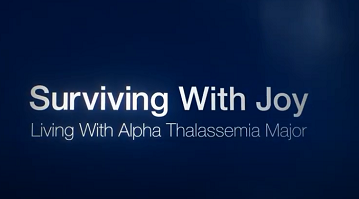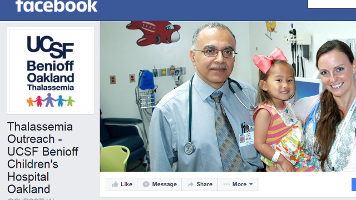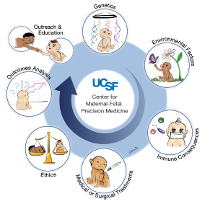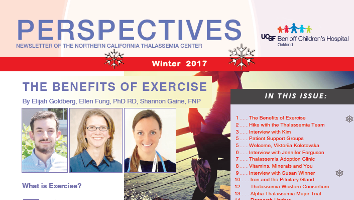8.0 - LIVER AND GALLBLADDER DISEASE
Liver toxicity can occur as a direct consequence of iron toxicity, from transfusion-acquired hepatitis, and/or from other causes of liver disease such as medications, liver toxins, autoimmune reactions, or metabolic disease (Wilson’s disease, alpha-1 antitrypsin). Liver function and hepatitis serology should be routinely screened in thalassemia patients on chronic transfusion as described below.
8.1 Screening for hepatic dysfunction
A hepatitis B surface antibody should be documented at the initial screening of the patient. Patients should have a positive hepatitis B antibody. This will usually occur following a vaccination or an infection. If it is negative, then a surface antigen and core antibody should be monitored annually until patients demonstrate surface antibody, either from resolved infection or vaccination.
Annual hepatitis C antibody should also be checked. If the hepatitis C antibody screen becomes positive, PCR for hepatitis C should be measured.
Every three months, bilirubin, AST (SGOT), ALT (SGPT), and alkaline phosphatase should be measured via a blood test. If the ALT is elevated, it should be repeated in two weeks. If the ALT remains elevated at two weeks or if it is intermittently elevated over a period of three months, a complete evaluation for causes of hepatitis should be performed. Suggested evaluation might include the following.
- PT, PTT, albumin, albumin/globulin ratio
- Hepatitis A IgM (if not previously positive or known to be immune)
- Hepatitis B DNA quantification
- Hepatitis C antibody (if the antibody screen is positive, viral RNA should be documented by qualitative TMA assay and load should be measured by quantitative PCR)
- CMV titers (IgG, IgM), CMV PCR and/or urine culture for CMV
- EBV titers (PCR for reactivation)
- Baseline liver biopsy if PCR is positive for hepatitis C, to evaluate severity of disease and need for therapy
- Autoimmune hepatitis, biliary obstruction, metabolic disease, and toxic hepatitis
8.2 Monitoring patients with documented hepatitis or hepatic dysfunction
Once hepatic dysfunction has been documented, hepatology consultation is important. The combination of hepatitis and iron overload increases the risk of liver damage. Rapid removal of iron and treatment of viral hepatitis should be considered.
All patients with hepatitis should be evaluated with a liver biopsy. Patients who have hepatitis B or C should be monitored for hepatocellular carcinoma with alfa-fetoprotein and have hepatic ultrasound evaluations biannually. This is particularly important if there is evidence of cirrhosis on the biopsy. Early treatment is recommended for newly acquired infection with hepatitis C.
Liver biopsy results showing moderate and/or progressing fibrosis are an indication for treatment.
8.3 Evaluation and treatment for hepatitis C
A decision on whether to recommend treatment of established hepatitis C depends on clinical status, severity, or progression of fibrosis. Treatment consists of pegylated interferon alfa given as a subcutaneous injection once a week and oral ribavirin twice daily for patients 18 years and older. (An interferon alfa and ribavirin combination is approved for children.) Recent data suggests the addition of protease inhibitors (such as boceprevir and telaprevir) may further improve cure rates.
Treatment with pegylated interferon alfa requires monitoring due to significant side effects, including:
- neutropenia and thrombocytopenia
- evidence for hypothyroidism (antithyroid peroxidase antibody titer predicts complications of hypothyroidism)
- vision and hearing changes
- cardiac arrhythmia or failure
- depression
Liver enzymes and hepatitis C quantitative and qualitative (TMA) PCR should be monitored for response to treatment at one, two, three, six, twelve, and eighteen months. Ribavirin requires close monitoring of the hemoglobin because of increased risk of hemolysis. Patients on ribavirin require increased transfusions to avoid complications related to rapidly worsening anemia—particularly cardiac events. An increase in chelation is frequently necessary with an increase in blood requirement.
8.4 Evaluation and treatment for hepatitis B
A decision on whether to recommend treatment of established hepatitis B depends on clinical status. A liver biopsy should be obtained before initiating treatment. Patients with indices of active viral replication (HBV DNA), e-antigen status, liver injury (elevated transaminases and/or active hepatitis on biopsy), or family history of hepatocellular carcinoma are candidates for therapy.
Several drugs (interferon alfa, pegylated interferon alfa, lamivudine, adefovir, entecavir) are FDA-approved for use in adults. (Some are approved for children.) Consult with your hepatologist regarding treatment options.
8.5 Gallbladder disease
Chronic hemolytic anemias result in the development of bilirubin gallstones. Up to two-thirds of thalassemia patients develop gallstones. Thalassemia intermedia patients may be at greater risk. Most patients remain asymptomatic and do not have cholecystitis or cholangitis. Surgical removal of gallstones should be reserved for the symptomatic patient.












